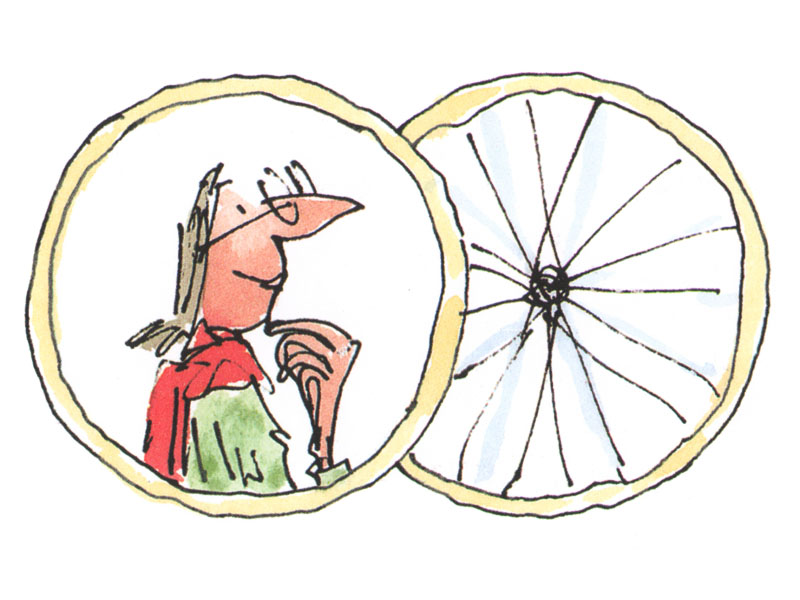
In children’s literature, “Mrs.” characters tend to be of two types. More often than not, they are either wise and kindly aunties or grandmothers, pouring out love and affection on all around them, or mean old hags. But Mrs. Armitage, from Quentin Blake’s Mrs. Armitage on Wheels Most recent English edition: Penguin Random House, 1999. ISBN 9780099400523. , breaks the mold—she’s a charming eccentric, a spirited inventor of interesting things.
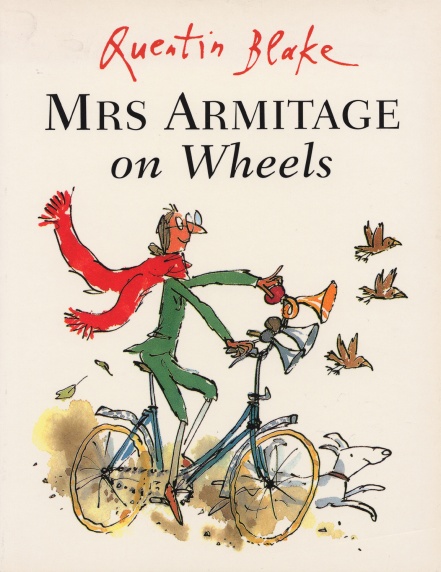
The fun stories about the indomitable Mrs. Armitage are written and illustrated by English artist Quentin Blake, winner of the Hans Christian Andersen Award, the highest honor in children’s literature. Finding an accessible, engaging, and fun book for kids who are new to independent reading remains a challenge, and the stories about Mrs. Armitage are perfect for children who have just graduated from the ABCs. The huge, bright, airy illustrations are full of joy, and do a great job translating the spirit of the heroine and helping a child understand her feelings, even if he is not yet ready to “read” them through the text. There are no more than two or three sentences to a page, and this rather short text, in its large font, becomes a sort of epic, as the child turns the pages over and over as he reads. He gets the sense that he has read a whole book by himself, and enjoyed it. The experience reinforces not just the skill of reading, but the sense of happiness from the labor of reading (and for a child who’s just started to read, reading is still serious labor, which makes this a critical time to build positive associations with this process).
These slim books are a great opportunity for children to learn resourcefulness in the face of whatever life throws at you. This is essential at six to eight years old, when children spend ever less time with parents that can help, support, and defend them, and ever more with their peers and new adults. The message is particularly important for a timid child, who may often find himself in difficult situations because of his indecisiveness. Mrs. Armitage inspires a child to act boldly and think creatively: you can do it! That’s the spirit behind Mrs. Armitage on Wheels, which my sons and I read together, with much laughter. The story of fixing up a bicycle is highly significant for any child, because learning to ride a bike is—like mastering the use of the potty, the spoon, or shoelaces—directly related to the child’s sense of self and self-esteem. The bicycle is intrinsically important for a child and a story on precisely this subject matter for beginning readers hits the bull’s eye.
The plot is simple: Mrs. Armitage, an avid cyclist, goes on a bike ride, accompanied by her beloved dog Breakspear. There are sudden obstacles: first she nearly runs over a hedgehog, because he didn’t hear her bell, then she gets her hands greasy fixing her bike chain, and then she gets hungry… Life throws challenges her way, and she instantly comes up with original solutions, while continuing to enjoy life and its surprises. She attaches three large horns, a bucket of water, a seat for Breakspear, a tray for sandwiches, a roof of umbrellas, and sails to her bike.
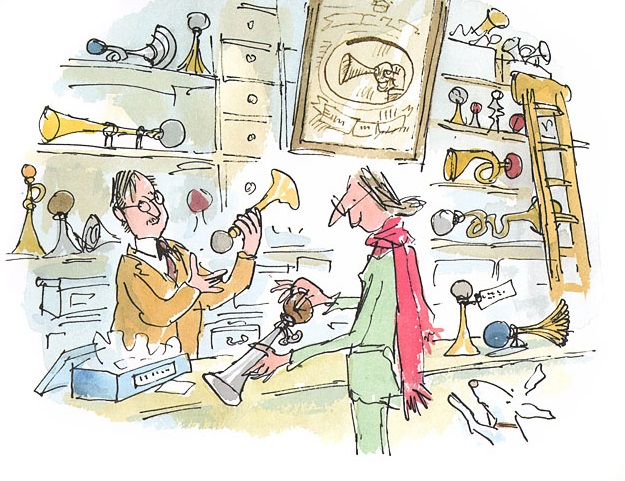
You’ll agree, this is unusual behavior for a proper, married lady. But she doesn’t care in the least—she’s happy. This unorthodox attitude is what drew in my sons, especially Makar, who loves to choose his own way in everything. And so I was not at all surprised when, a few days later, as we were heading out on a little trip, he asked, “Mom, will we make a snack tray, like Mrs. Armitage?” For me, this was a clear sign that the book had “taken root,” and that in the depths of a child’s heart, it had found a home.
As she comes up with solutions for her problems, Mrs. Armitage constantly narrates her train of thought and actions to Breakspear. I think this is an important choice for a book meant for first- and second-graders, who have a strong need to express their feelings in words, which is something not all children can manage.
Even more important, I would say, is that this odd Mrs. shows the young reader that you don’t always have to “be a good boy/girl,” you don’t have to live up to someone’s expectations or follow the accepted way in order to be happy. It’s a great book for A-students, who are often driven to do everything “right,” follow rules unconditionally, and to be accepted by others. Any deviation from the norm, any unexpected turn of events can knock them off course. Mrs. Armitage, meanwhile, helps overcome this state, to learn to “let go” of a difficult situation, to just live with it, using imagination rather than fear. That’s when things get interesting. Makar’s eyes glowed in awe when he saw Mrs. Armitage’s bicycle-contraption illustrated in the book. He wanted to make something similar for his own bicycle. I was reminded how wonderful it is to see a child “click” with a book and use it as a helper. I think this is a very strong motivation to read, even more so than a desire to learn or investigate a topic.
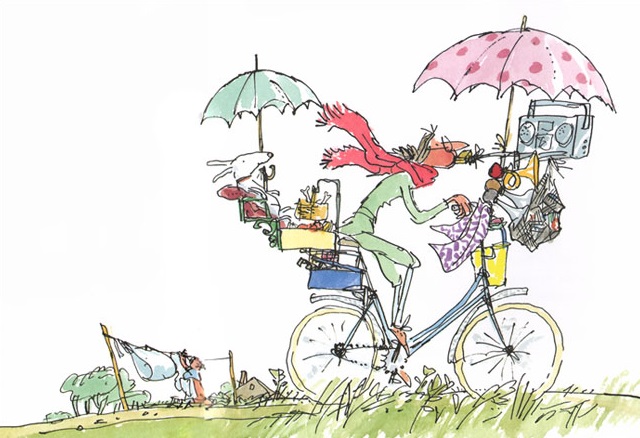
When a sudden gust of wind sends the bicycle careening off course, Mrs. Armitage falls and the bike breaks. Now all she can do is throw it out. But we don’t see the heroine despair (after all that work she put in!), or even frustration. Giving up and crying isn’t her style. “What this bike needs...is taking to the dump! And what I need is…” If you fall, get right up and go on. This lesson is the best gift a parent can give their child to prepare them for life out in the world. Learn to listen to yourself, to live your life, walk your own path as Mrs. Armitage does. A new chapter begins in her life, and little readers are invited in as co-authors. Rather than presenting a moral, the story of Mrs. Armitage’s bike ride is open-ended, which holds a child’s attention until the very last line. “What these roller-skates need...what these roller-skates really need is….”
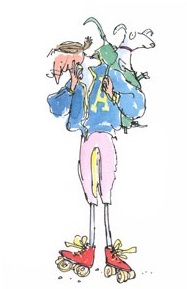
It would appear that the book ends at this ellipse, but my boys, accustomed to Mrs. Armitage’s unexpected inventions, started to consider the options. “When she puts on the roller-skates, she’ll have to put Breakspear in a little carrier—they’re always together and what if he gets tired?” Yes...putting a dog in a carrier is very much in the spirit of Mrs. Armitage. Life goes on. Even if Mrs. Armitage falls while roller skating.
Elena Litvyak
Translated from the Russian by Alisa Cherkasova
Book cover image: penguin.co.uk
Follow us on Facebook.
